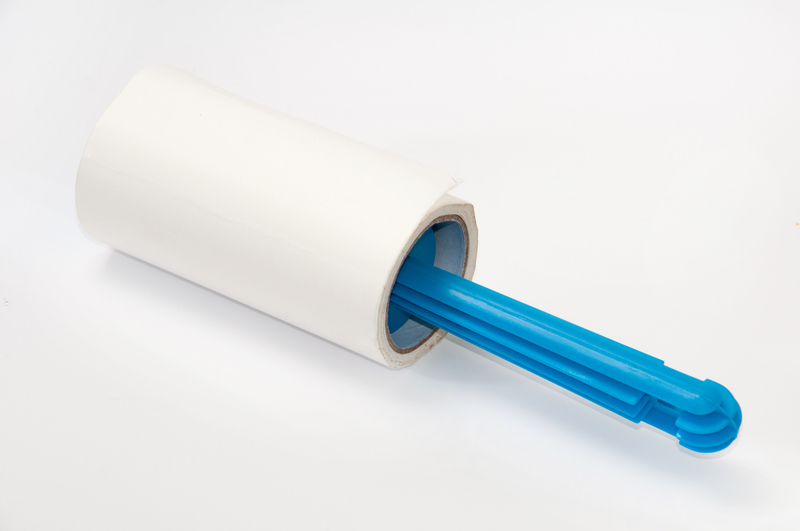Explore Professional Techniques for Cleaning Jewelry
Posted on 01/09/2025
Explore Professional Techniques for Cleaning Jewelry
Keeping your jewelry sparkling isn't just about aesthetics; it's also vital for preserving the longevity and value of your precious pieces. This comprehensive guide explores professional jewelry cleaning techniques that cater to different metals and gemstones, ensuring your treasures remain radiant for years to come. Whether you're dealing with diamond rings, gold necklaces, or delicate pearl earrings, these expert secrets and methods will transform your jewelry care routine.

Why Proper Jewelry Cleaning Matters
Many jewelry owners underestimate the significance of regular cleaning. Over time, oils from your skin, dust, and even the air can dull gemstones and tarnish metals. Without proper care, grime can weaken settings or permanently damage softer stones. Professional cleaning techniques not only restore brilliance but also safeguard your jewelry's structural integrity.
The Benefits of Professional Jewelry Cleaning
- Preserves Appearance: Removes buildup for a like-new shine.
- Prevents Damage: Discourages loosening of stones and settings.
- Increases Longevity: Maintains metal quality and gemstone clarity.
- Facilitates Inspection: Professionals can detect early signs of wear and tear.
Jewelry Materials and Appropriate Cleaning Methods
Every jewelry piece is unique, demanding specific cleaning methods to avoid damage. Below, we'll outline the best professional jewelry cleaning techniques for the most common materials and stones.
Cleaning Diamond Jewelry
Diamonds are among the hardest substances, but their brilliance can still be masked by residue. Here's how the professionals keep them dazzling:
- Ultrasonic Cleaning: Jewelry stores often use ultrasonic cleaners that emit high-frequency sound waves in a liquid, dislodging stubborn dirt from settings, especially effective for diamond pieces.
- Steam Cleaning: This method uses high-pressure steam to safely blast away grime and kill bacteria, restoring shine.
- Manual Polishing: Professionals use soft-bristled brushes and non-abrasive cleaners to gently clean underlying areas, ensuring all residue is removed.
Expert Gold and Platinum Jewelry Cleaning
Gold and platinum need gentle yet thorough cleaning. Professional jewelers avoid harsh chemicals that can discolor or weaken the metal.
- Warm Soapy Water: The most common method includes soaking the piece in a mild dish soap solution, followed by a gentle brush.
- Sonic Cleaning: For intricate pieces, professional-grade sonic cleaners provide deep cleaning without abrasion.
- Polishing Cloths: Jewelers use special anti-tarnish cloths to buff surfaces for a rich, lustrous finish.
Cleaning Silver Jewelry: Professional Techniques
Sterling silver is prone to tarnish, requiring specialized care:
- Professional Silver Dips: Jewelers use carefully formulated dips that remove tarnish in seconds without scratching.
- Electric Cleaning Devices: Commercial silver cleaners employ electrical currents to lift tarnish efficiently.
- Microfiber Cloths: Hand-polishing with designated silver cloths helps restore shine while minimizing micro-scratches.
Pearls and Precious Gemstones: Gentle Professional Cleaning
Organic gems such as pearls, opals, turquoise, and more require meticulous care:
- Soft Cloth Wiping: Professionals never soak pearls. Instead, pieces are wiped with a damp, soft microfiber cloth.
- Mild Cleaners: Only the gentlest non-detergent soaps are used, ensuring the nacre stays intact.
- Restringing Services: Jewelers inspect and routinely restring pearl necklaces as silk weakens over time.
Step-by-Step: How Professionals Clean Jewelry
Ever wondered what happens when you drop off your piece at the jeweler's? Let's walk through a professional cleaning process for jewelry step by step:
- Inspection: The jeweler examines every part of the piece, checking for loose stones, worn prongs, or broken clasps that could cause future issues.
- Pre-Cleaning: Any surface dirt or buildup is carefully brushed away to prepare for deeper cleaning.
- Main Cleaning Method: Depending on the material, the piece undergoes ultrasonic cleaning, steam blasting, or manual washing for optimal dust and oil removal.
- Drying and Polishing: Jewelry is dried with lint-free cloths and polished to restore its original radiance.
- Final Check: A second inspection ensures no cleaning residue remains and that all stones are secure.
Advanced Equipment Used in Professional Jewelry Cleaning
- Ultrasonic Cleaners: These devices generate microscopic bubbles that implode, removing dirt from crevices unreachable by brushes.
- Steam Cleaners: Emit a focused jet of steam, dissolving built-up grime safely.
- Professional Polishing Wheels: Jewelers employ specialized compounds and wheels for a flawless high-gloss finish.
At-Home Care vs. Professional Jewelry Cleaning
While regular at-home cleaning is essential, some steps should be left exclusively to the professionals, especially when dealing with valuable, antique, or delicate pieces. But combining routine at-home maintenance with periodic professional cleanings offers the best of both worlds.
Safe At-Home Jewelry Cleaning Tips
- Use Lukewarm Water: Always avoid hot water for pieces set with glue or delicate stones.
- Mild Soap Only: Harsh chemicals or toothpaste can scratch and damage jewelry.
- Soft Brushes: Opt for baby toothbrushes to prevent abrasion.
- Avoid Soaking Pearls and Opals: These absorb water and are best wiped clean.
- Dry Thoroughly: Moisture trapped in settings can corrode metals and loosen adhesives.
When to Seek Professional Jewelry Cleaning Services
- Intricate Settings: Pave, antique, or multi-gem pieces need a professional's touch.
- After Exposure: Following contact with chlorine, salt water, or cosmetics, your jewelry benefits from a thorough professional clean.
- Annually: Once a year, a full cleaning and inspection ensures the continued health of your collection.
How to Maintain Your Jewelry's Sparkle Between Professional Cleanings
To maximize the time between professional cleanings and keep your pieces shining, adopt these jewelry care best practices:
- Store Safely: Keep items in lined, individual pouches or boxes to avoid scratching and tarnishing.
- Remove During Tasks: Always take off jewelry before swimming, cleaning, or applying beauty products.
- Clean Regularly: A quick monthly clean at home prevents buildup from taking hold.
- Handle with Care: Avoid grabbing gemstones directly; natural oils can dull their surface.
- Check for Damage: Promptly address any loose stones or clasps with a professional repair.
Eco-Friendly and All-Natural Cleaning Options
Environmentally conscious methods are also available for professional-grade jewelry cleaning. Some jewelers now offer:
- Biodegradable Solutions: Plant-based cleaning agents that gently yet thoroughly clean jewelry without harmful chemicals.
- Steam and Ultrasonic Only Services: Techniques that minimize the use of disposable materials and chemicals.
Choosing the Right Professional Jewelry Cleaner
Select a reputable jeweler with industry certifications (like those from GIA or AGS) and modern equipment. Ask about their cleaning processes and whether they offer additional inspections or minor repairs as part of the service. Look for services that tailor methods to your jewelry's specific metals and stones, ensuring personalized care for each piece.
Questions to Ask Your Professional Jewelry Cleaner
- What methods and products will you use on my jewelry?
- Do you offer complimentary inspections or tightening of settings?
- How long will the cleaning process take?
- Are your cleaning products hypoallergenic or environmentally friendly?
- Will you notify me if you spot any damage or needed repairs?

Summary: The Value of Professional Jewelry Cleaning
Caring for your jewelry is an investment in its beauty and future value. By understanding and adopting expert-level cleaning techniques, you safeguard not just your jewelry's look but its legacy. Professional cleaning doesn't just restore lost sparkle; it's a vital preventative measure, catching small problems before they escalate. Whether you visit a jeweler annually or follow specialized at-home care routines, keeping your pieces clean is the key to a lasting, dazzling collection.
Embrace these professional techniques for jewelry cleaning and watch your diamonds, gemstones, gold, and silver shine like new--year after year.
Frequently Asked Questions About Professional Jewelry Cleaning
- How often should I have my jewelry professionally cleaned?
For everyday pieces, twice a year is ideal. Heirlooms and fine jewelry benefit from annual professional cleaning and inspection. - Is ultrasonic cleaning safe for all types of jewelry?
No. Pearls, opals, emeralds, and antique or glued jewelry should never go in ultrasonic cleaners. - Can I clean my engagement ring at home?
Absolutely! Use mild soap and a soft brush for weekly cleaning. For deeper cleaning and safety checks, visit your professional jeweler at least once a year. - What should I avoid when cleaning jewelry?
Do not use household cleaners, ammonia, bleach, or abrasive materials, as these can damage stones and metals.
Keep Your Jewelry Radiant With Professional Techniques
Whether you're looking to restore a family heirloom or keep your modern pieces as brilliant as the day you bought them, professional jewelry cleaning techniques deliver optimal results. Start incorporating these expert-approved methods and watch your collection glitter and gleam for generations to come.



